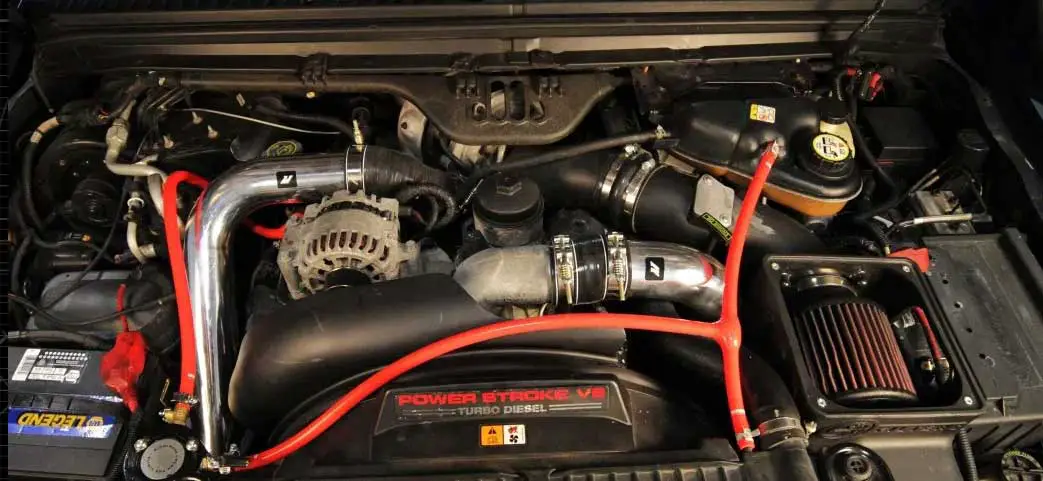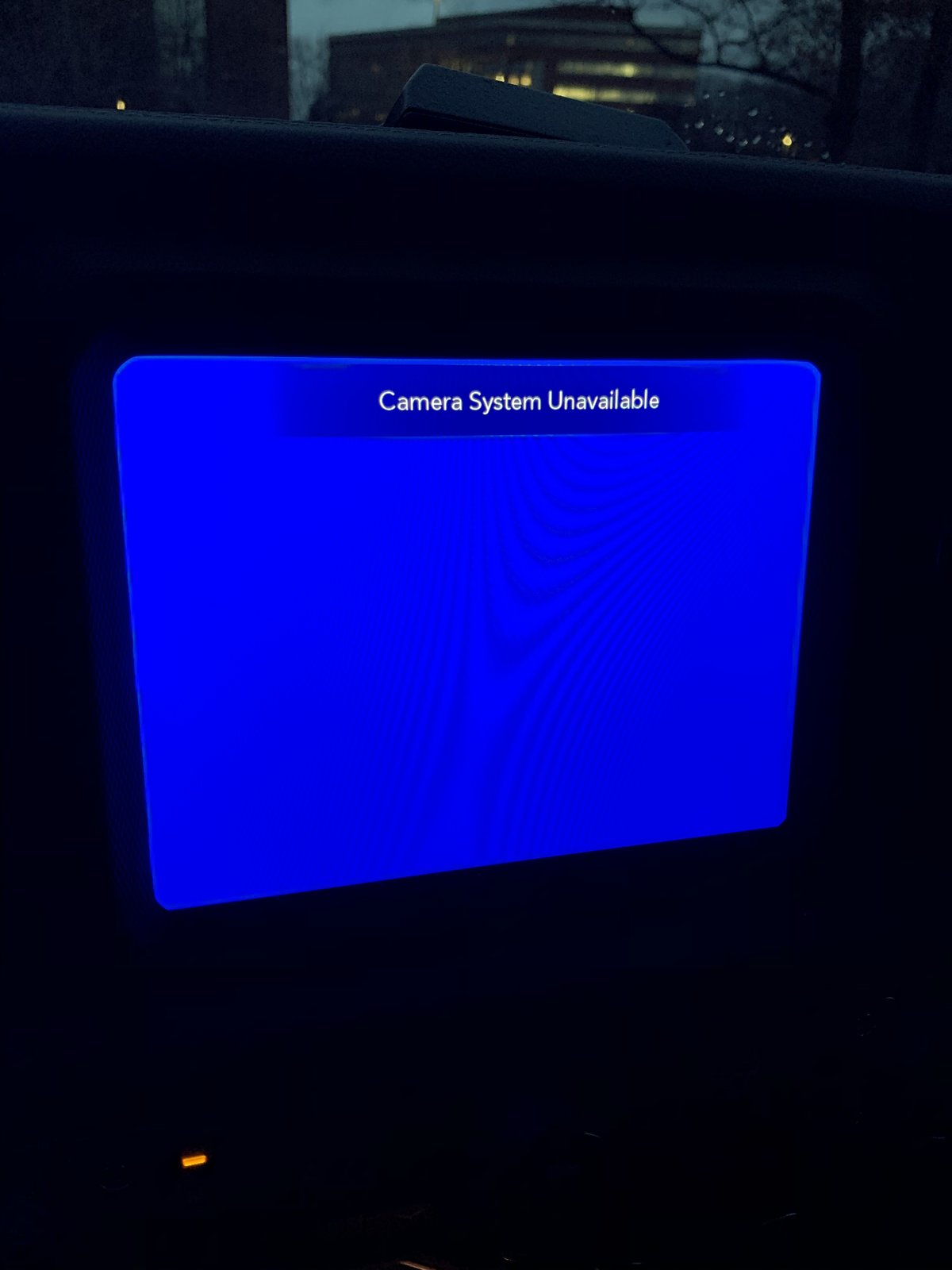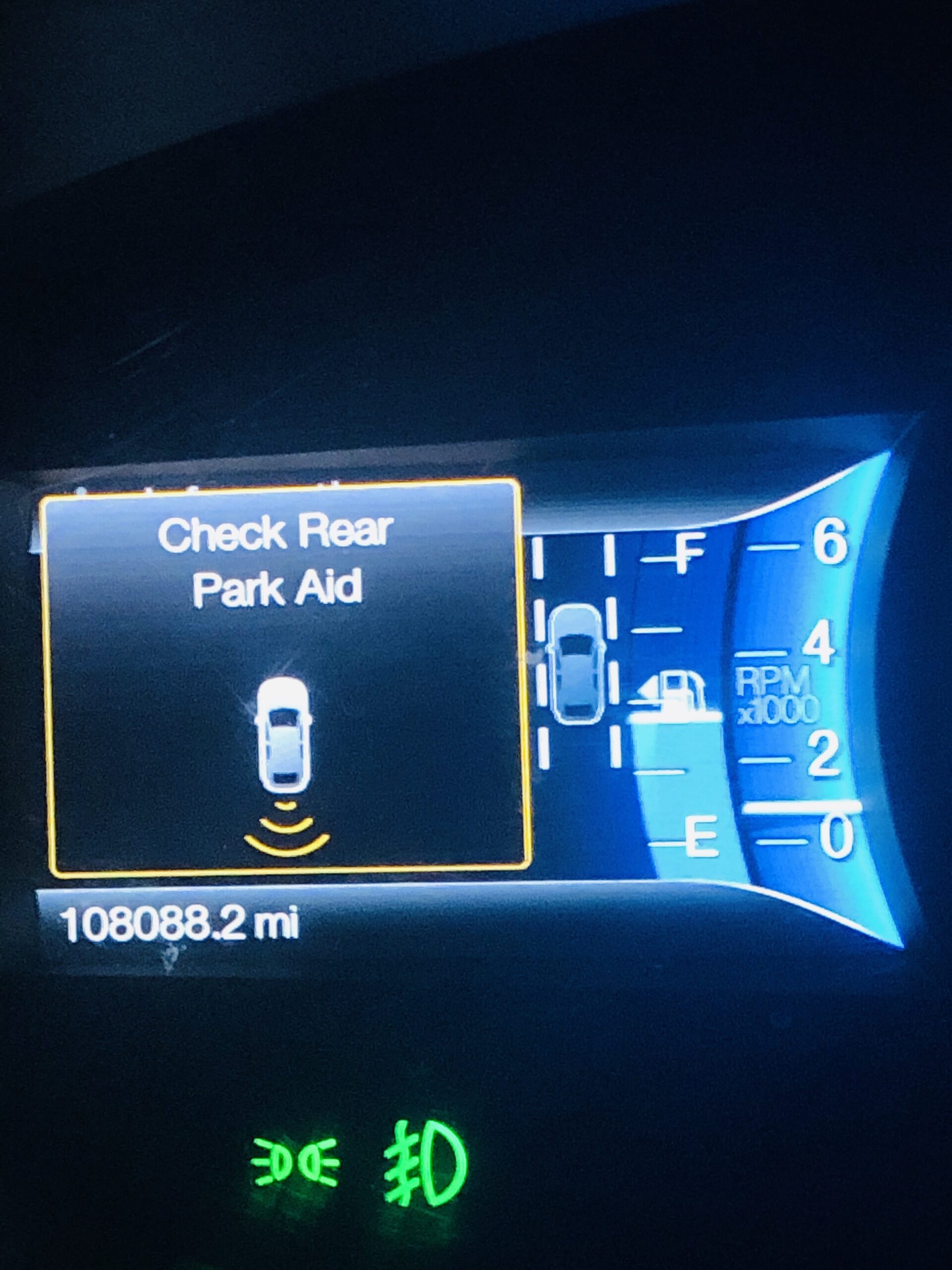If you own a Ford truck with a 6.0L Powerstroke engine, you may have heard or experienced some of the common problems that plague this diesel engine.
The 6.0L Powerstroke was introduced in 2003 and used until 2007 in the F-Series trucks.
It was designed to meet the stricter emissions standards of the time, but it also came with a host of reliability and durability issues.
Some of the most frequent 6.0L Powerstroke issues include head gasket failures, FICM failures, oil cooler clogs, EGR valve and cooler problems, and turbo failures.
These problems can cause your truck to lose power, overheat, smoke, leak, or even break down completely.
Fortunately, there are ways to fix these problems and prevent them from happening again.
In this article, we will explain the causes and symptoms of the 6.0L Powerstroke issues.
We will also provide you with the best solutions and tips to keep your engine running smoothly and efficiently.
Whether you are looking to buy, sell, or maintain a 6.0L Powerstroke truck, this article will give you the facts and the answers you need.
What Are The Common 6.0L Powerstroke Issues?
The 6.0L Powerstroke is a diesel engine that was used by Ford in its F-Series trucks from 2003 to 2007. It was designed to meet the stricter emissions standards of the time, but it also suffered from many reliability and durability issues. Some of the most common problems that plagued the 6.0L Powerstroke are:
1: Head Gasket Failures And Tty Head Studs
The 6.0L Powerstroke came with torque-to-yield (TTY) head studs, which are fasteners that stretch beyond their elastic limit when torqued. This provides a precise and consistent clamping force, but it also makes them prone to failure under high cylinder pressures. The TTY head studs can cause the head gaskets to blow, leading to coolant leaks, overheating, and loss of compression.
2: FICM failure
The fuel injector control module (FICM) is an electronic device that controls the fuel injectors and the high-pressure oil pump (HPOP). The FICM can fail due to excessive heat and vibration from the engine, causing poor fuel delivery, low fuel pressure, rough idling, loss of power, and hard starting. The FICM can be tested with a multimeter to check its voltage output, which should be around 48 volts.
3: Oil cooler clogging
The 6.0L Powerstroke has a liquid-on-liquid oil cooler, which uses engine coolant to cool down the engine oil. The oil cooler has very small passages that can get clogged by debris, sand, and sludge from the coolant system. This restricts the oil flow and causes the oil temperature to rise, which can damage the engine components and the EGR cooler.
4: EGR cooler failure
The exhaust gas recirculation (EGR) system is designed to reduce the nitrogen oxide (NOx) emissions by recirculating some of the exhaust gas back into the intake manifold. The EGR cooler is a heat exchanger that cools down the exhaust gas before it enters the EGR valve.
How To Fix Common 6.0L Powerstroke Problems
Most of the 6.0L problems can be fixed with proper maintenance and aftermarket solutions. Here are some of the common ways to fix the 6.0L PowerStroke problems:
Head Gasket Failures And Tty Head Studs Fix
To fix TTY problems, replace its head studs with stronger aftermarket ones, such as ARP head studs, which can handle higher boost and performance modifications. The head gaskets should also be replaced with new or improved ones, and the cylinder heads should be checked for warping or cracking.
FICM failure fix
The FICM can be tested with a multimeter to check its voltage output, which should be around 48 volts. If the voltage is low, the FICM needs to be replaced or repaired with a better quality one. Some aftermarket FICMs also offer performance tuning options for the engine.
Oil Cooler Clogging Problems Preventions
The oil cooler clogging can be prevented by using a coolant filter, flushing the coolant system regularly, and replacing the oil cooler with a new or upgraded one3. Some aftermarket oil coolers have larger passages or external designs that improve the oil cooling efficiency and reduce the clogging risk.
EGR Cooler Failure Fix
The EGR cooler failure can cause coolant leaks, white smoke, and engine overheating. The EGR cooler can be replaced with a new or improved one, or deleted altogether with an EGR delete kit, which bypasses the EGR system. However, deleting the EGR system may be illegal in some areas and may affect the engine performance and emissions.
Turbocharger Problems Fix
The turbocharger can be fixed by cleaning, repairing, or replacing the damaged parts, or by upgrading to a better quality or performance turbocharger.
Also Read: How to Make A 6.7 Powerstroke Turbo Louder? Easy To Follow Steps
Why Did The 6.0L Powerstroke Fail?
Some of the reasons why the 6.0L Powerstroke failed are:
- It was designed to meet the stricter emissions standards of the time, but the new EGR system caused more problems than it solved.
- It came with torque-to-yield (TTY) head studs, which were weak and prone to failure under high cylinder pressures.
- It had a liquid-on-liquid oil cooler, which had very small passages that could get clogged by debris and sludge from the coolant system.
- It had a fuel injector control module (FICM) that could fail due to excessive heat and vibration from the engine, causing poor fuel delivery and performance.
- It had a turbocharger that could have problems such as oil leaks, worn bearings, damaged seals, stuck vanes, or complete failure.
Power Stroke 6.0l Pros And Cons Compared

Pros
- High torque
- Great power
- Durable block (later models)
- Long lifespan (later models)
- Good fuel economy (highway)
- Affordable (used)
Cons
- Early model issues
- Head gasket prone
- EGR cooler clogs
- Injector problems
How Much Horsepower Does A 6.0l Powerstroke Have?
According to motortrend.com, the 6.0L Powerstroke engine has 325 horsepower and 560-570 lb-ft of torque depending on the model year. It was introduced in 2003 as a replacement for the 7.3L Powerstroke engine, which had less power and more emissions. The 6.0L Powerstroke engine features a variable geometry turbocharger, four valves per cylinder and an EGR system to improve performance and reduce NOx emissions.
How Much Does A 6.0L Powerstroke Cost?
The cost of a 6.0L Powerstroke engine depends on whether you want to buy a complete engine, a long block, a short block, or an overhaul kit. The average prices of these options are:
- Complete engine which will cost you around $7,800
- If you go by purchasing a long block, it will cost you between $12000 to $20850
- The Short block on other hand will cost you between $4450 to $1000.
- The Overhaul kit will cost you around $2500.
Is 6.0L Or 6.4L Powerstroke, Which One Is Better?
Choosing between the 6.0L and 6.4L Powerstroke depends on your priorities and risk tolerance
- For affordability and ease of repair, choose the 6.0L (be prepared for potential issues).
- For potentially better reliability and higher power (with higher costs), choose the 6.4L.
What Is High Mileage For A 6.0L Powerstroke?
According to powerstroke.org, the average lifespan of a 6.0L Powerstroke engine is typically around 200,000 to 300,000 miles. High mileage for a 6.0L Powerstroke engine can vary depending on how the engine is used, maintained, and modified.
However, some users have reported that their engines have lasted up to 400,000 miles or more with proper maintenance and aftermarket solutions.
How Much Oil Does A 6.0L Powerstroke Use?
According to the deadheaddiesel.com, the 6.0L Powerstroke engine uses 15 quarts (14.2 liters) of oil with a filter change. This is the total amount of oil that the engine can hold when it is completely drained and refilled, including the oil filter. The oil and oil filter should be changed every 5,000 miles for optimal performance and reliability.
Also Read: M271 Engine Problems: Should You Be Concerned!
What Is The Fuel Consumption Of The 6.0L Powerstroke Engine?
The average fuel mileage of the 6.0L Powerstroke engine is around 16-18 MPG combined and 19-20 MPG highway. However, some users have reported higher or lower numbers depending on their driving habits and truck configurations. To improve the fuel consumption of the 6.0L Powerstroke engine, some of the recommended tips are;
- Change the oil and oil filter regularly with the correct viscosity and quality
- Change the fuel filter and air filter periodically to prevent clogging and contamination
- Check the tire pressure and alignment to reduce rolling resistance and drag
- Avoid excessive idling, speeding, and hard acceleration to reduce fuel wastage
- Install a tuner, programmer, or chip to optimize the engine performance and fuel economy
- Upgrade or replace the problematic parts, such as the head studs, the FICM, the oil cooler, the EGR cooler, and the turbocharger, with better quality or performance ones.
How Much Fuel Pressure Should A 6.0L Powerstroke Have?
The recommended fuel pressure for a 6.0L Powerstroke engine can vary slightly depending on the specific year and model due to potential updates and adjustments made by Ford. However, a general guideline for healthy fuel pressure in a 6.0L Powerstroke is:
- Idle: Around 50 psi (pounds per square inch)
- Wide Open Throttle (WOT): Above 45 psi and ideally remain steady
Related Post: Jeep 3.6 Engine Problems: Issues, Symptoms, Causes, & Solutions
How Can I Make My 6.0L Powerstroke Faster?
There are many ways to make your 6.0L Powerstroke faster, depending on your budget and goals. Some of the common methods are:
Tuning
Tuning is the process of modifying the engine’s computer settings to optimize its performance and fuel economy. It can increase the horsepower, torque, and responsiveness of your 6.0L Powerstroke. You can use a tuner, programmer, or chip to tune your engine, which are devices that plug into your truck’s diagnostic port and allow you to change various parameters, such as fuel injection timing, boost pressure, and exhaust gas recirculation (EGR) system. Some tuners also offer custom tunes that are tailored to your specific modifications and preferences.
Injectors
Injectors are the devices that spray fuel into the cylinders of your engine. It can wear out over time and cause poor fuel delivery, low fuel pressure, and reduced performance. Replacing your stock injectors with larger or better quality ones can improve the fuel flow, atomization, and spray pattern of your engine.
This can result in more power, efficiency, and smoothness. However, larger injectors may also require more air and oil to match the increased fuel demand, so you may need to upgrade your turbocharger and high-pressure oil pump (HPOP) as well.
Turbocharger
Turbocharger is a device that uses the exhaust gas to spin a turbine, which then drives a compressor that forces more air into the engine. It can boost the power and performance of your engine by increasing the air density and oxygen content in the intake manifold. However, your stock turbocharger may have problems such as oil leaks, worn bearings, damaged seals, stuck vanes, or complete failure, which can affect the boost pressure, response, and efficiency of your engine.
Replacing or upgrading your turbocharger with a better quality or performance one can improve the airflow, reliability, and durability of your engine. You can also install a wastegate or a blow-off valve to control the boost pressure and prevent overboosting or surging.
Exhaust system
Exhaust system is the system that carries the exhaust gas from the engine to the tailpipe. It can affect the performance and emissions of your engine by creating backpressure, which is the resistance to the flow of exhaust gas. Backpressure can reduce the power and efficiency of your engine by limiting the amount of air and fuel that can enter the cylinders.
Replacing your stock exhaust system with a larger or less restrictive one can reduce the backpressure and improve the exhaust flow, sound, and temperature of your engine. You can also install a muffler, a resonator, or a catalytic converter to reduce the noise, drone, or pollution of your engine .
Conclusion
The 6.0L Powerstroke engine offered impressive power but faced reliability issues like head gasket failures, FICM malfunctions, oil cooler clogging, and EGR cooler problems.
These issues stemmed from stricter emissions standards, early model components, and neglecting maintenance.
Upgrading weak components and performing regular maintenance can improve reliability.
While potential repairs can be costly, the 6.0L Powerstroke can still be a powerful option with informed ownership and careful consideration of potential issues.
Choose later models (2006-2007) and have a mechanic inspect the engine before buying used.




